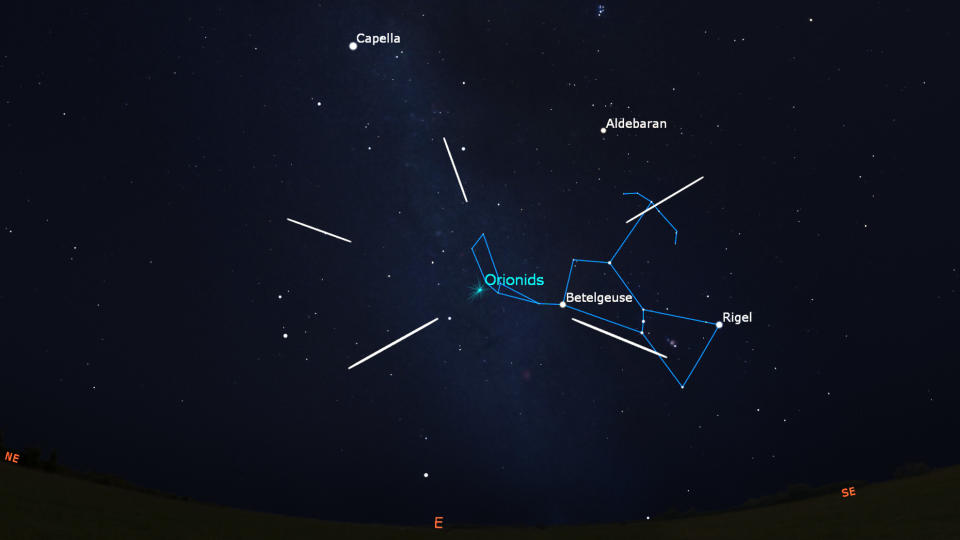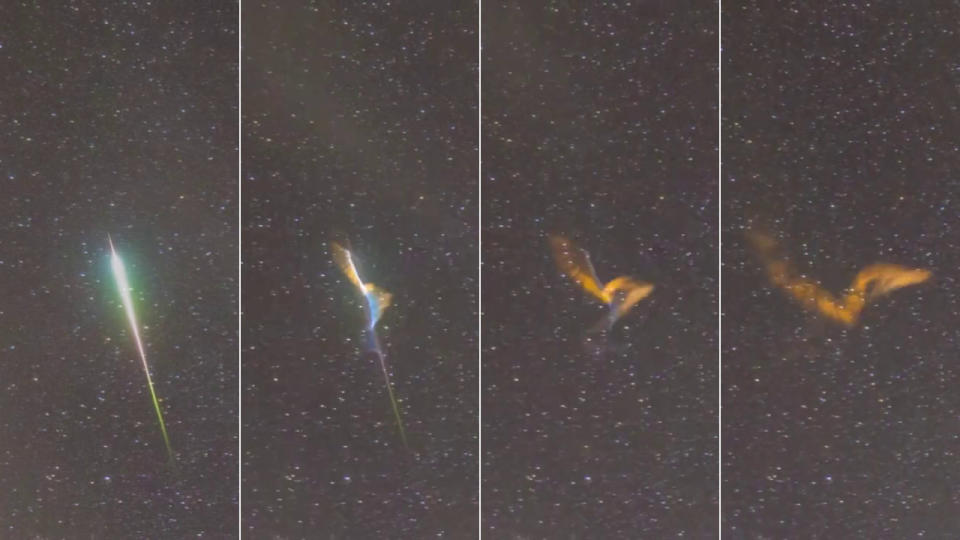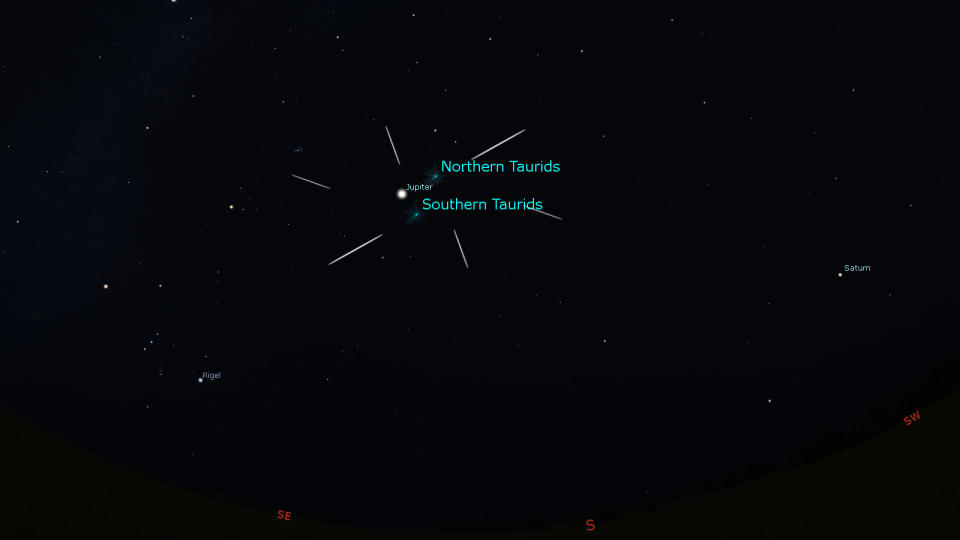Look up! The Orionid meteor shower peaks Saturday night

If your weather is good Saturday night, take some time to look up. You might spot pieces of Halley's Comet as they produce streaks of light across the night sky.
Each year, throughout the month of October, Earth crosses a stream of icy debris left behind in space by Comet 1P/Halley. While immersed in this stream, tiny bits of the comet plunge into the upper atmosphere, resulting in meteors flashing overhead.
With these meteors appearing to originate from a point in the sky near Betelgeuse, in the constellation Orion, this is known as the Orionid meteor shower.

The best viewing for the 2023 Orionid meteor shower will be on the night of Oct 21-22. Credit: Stellarium/Scott Sutherland
Due to the tremendous speed at which the bits of cometary debris enter the atmosphere — around 66 km/s or 237,600 km/h — the Orionids are known for producing bright meteors and the occasional fireball.
Another phenomenon to watch for with the Orionids is persistent trains.
Meteors are flashes of light produced by the intense pressure of a piece of dust or ice plunging into the atmosphere from space. The meteoroid compresses the air directly in its path, causing that air to heat up until it glows. For exceptionally fast meteoroids, like those from Comet Halley, they can also leave behind a faintly glowing trail that floats on the wind until it fades away.
Since persistent trains have only rarely been recorded, scientists are still figuring out what causes them. One idea is that the meteoroids travel fast enough to strip electrons from air molecules, ionizing them, and the glow comes from the energy released as the molecules snap up a stray electron from the environment. Another involves 'chemiluminescence', where metals vaporizing off the fast-moving meteoroids chemically react with ozone and oxygen in the air to produce a glow.

Four frames taken from a persistent train video, shot on October 21, 2022, show the initial Orionid meteor flash, and three views of the persistent train that developed in its wake. Credit: Brenda Tate/Tim Doucette/UGC
During the peak of the Orionid meteor shower, on the night of October 21st to 22nd, those viewing under clear, dark skies could see around 10-20 meteors every hour.
Watch for the shower's radiant to rise at around 10 p.m. local time, following the constellation Orion across the night. The radiant is the point in the sky from where the meteors of this shower all appear to originate.
However, don't focus too closely on that one point of the sky. Orionid meteors can show up at any point above us during the shower, so try to take in as much of the sky as possible to get the most out of the event.
READ MORE: How to get the most out of meteor showers and other night sky events
Overlapping showers
While watching for Orionid meteors, also be on the lookout for streaks of light originating from the constellation Taurus!

The twin N. Taurids and S. Taurids meteor showers originate from just 'west' of the Orionids. Credit: Stellarium/Scott Sutherland
Both the Southern Taurid and Northern Taurid meteor showers are active at this time of year. While the Northern Taurids peak in mid-November, the Southern Taurids are a peculiar case.
This meteor shower, which originates from a comet known as 2P/Encke, consistently begins around September 23. Depending on the year, though, the end date for the S. Taurids changes from as early as November 13 to as late as December 8. The shower's peak is equally strange, occurring over a period of about two and a half weeks, from October 19 to November 6. It tends to deliver between 5-10 meteors per hour at that time, with the potential for some brighter meteors closer to the November end of the peak.
According to Robert Lunsford from the American Meteor Society, this odd behaviour for the Southern Taurids is due to the complexity of Comet Encke's debris stream. In particular, the shifting dates are mainly due to the 'Taurid Swarm' — a second stream of gravel-like material embedded within Encke's 'normal' debris stream, which Earth encounters a few times each decade.
In those years when the swarm is absent, the Southern Taurids peak and end earlier (on Oct. 19 and Nov 13, respectively). When the swarm is active, the dates get pushed later, with the peak on November 6 and ending on December 8. The in-between years, like in 2023, still see some activity from the swarm, thus, the timing leans closer to those later dates.
(Thumbnail image courtesy the home planetarium software, Stellarium)

